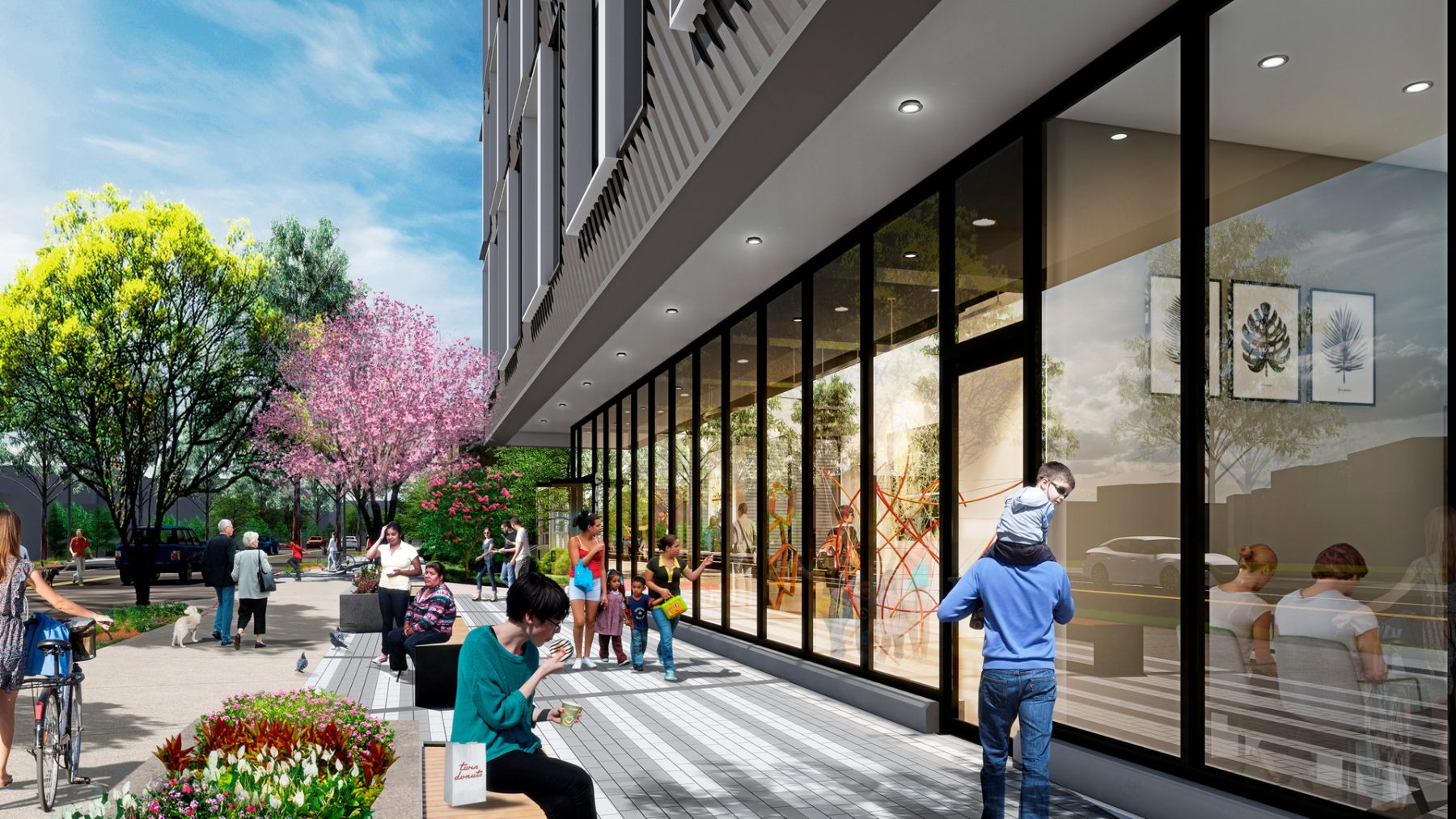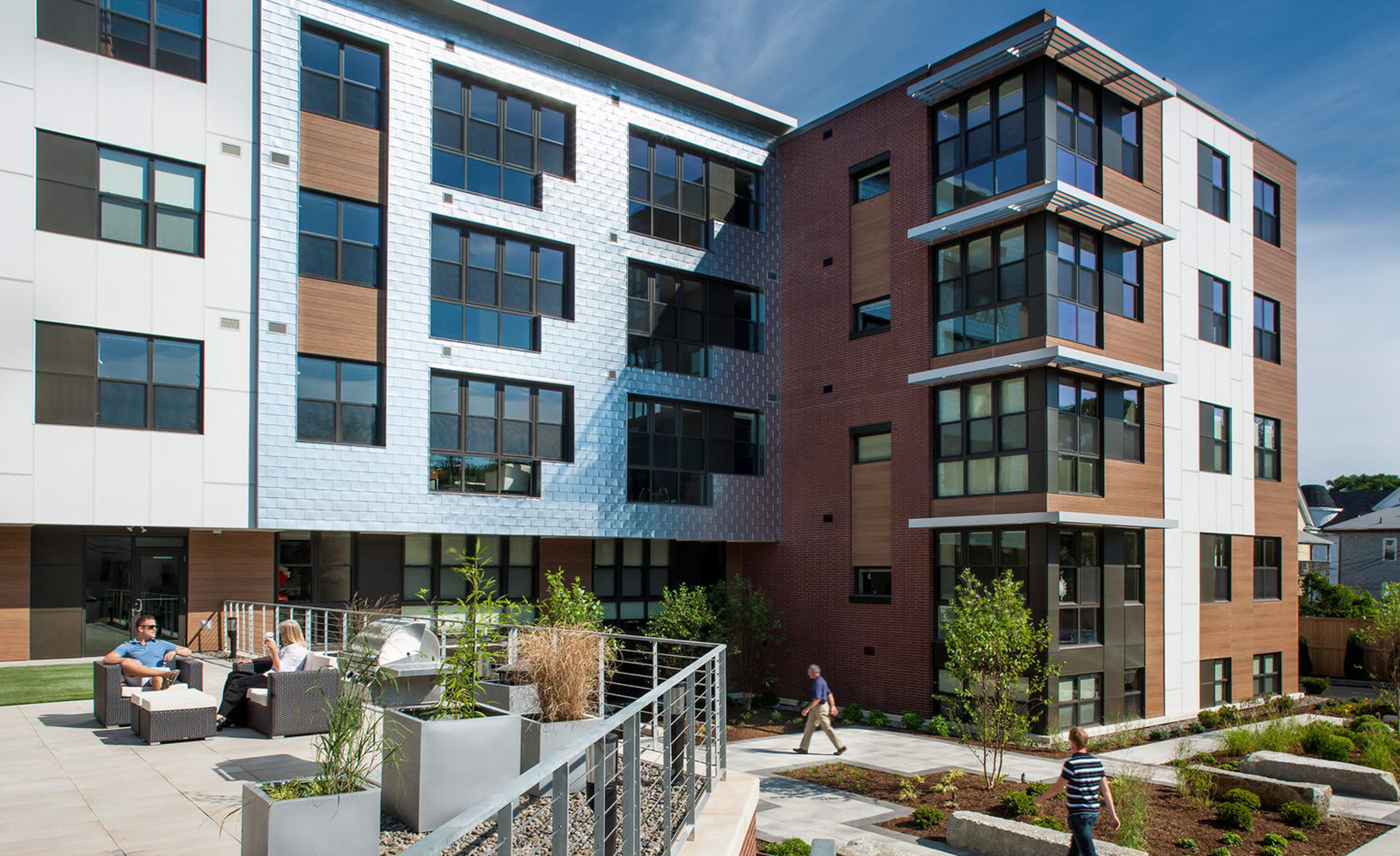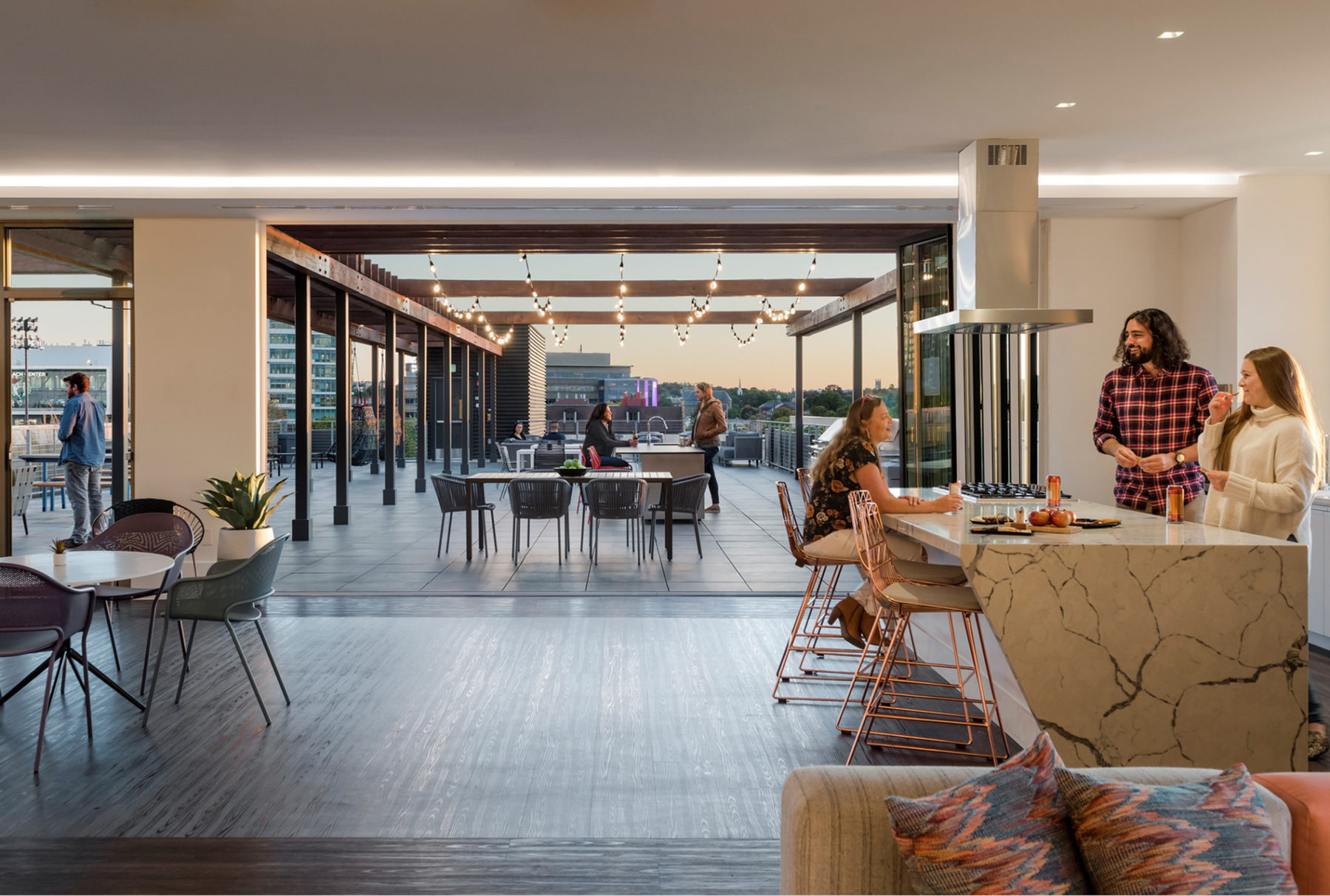Bruce A. Percelay is chairman and founder of Mount Vernon Company, a real estate investment and development firm known for improving communities and investing in sustainable, award-winning design.
PCA and Mount Vernon Company have worked together on mixed use, residential and hospitality projects totaling more than 750,000 square feet over the past decade.
The latest collaboration is Arthaus, a five-story residence with 74 apartments and a separate four-story building with nine condominiums. Arthaus will provide active ground floor programming including a local art gallery to enliven the pedestrian experience and create a vibrant public realm.
You use design as business strategy to differentiate your properties – the Allston Green District, the Revolution Hotel, and recently, Radius and Arthaus. What are you learning from these outside-the-box projects?
Our fundamental belief is we want to be the best in any neighborhood where we compete. And we express that through architecture. Virtually every building we have built is best in class. It does cost more, and it does take a lot more thought, and more time. We also believe that the highest risk in this business is to produce commodities. When the market is weak, the consumer is going to gravitate toward the highest quality environment they can get, especially if the price is relatively the same.
Our approach is to set a high watermark for design quality, and quite frankly, only a few other developers think that way. We are not bean counters. We don’t obsess over nickels and dimes. We are long-term thinkers. Therefore, we feel putting out unique and iconic buildings differentiates us from the competition and improves our performance. We know from years of experience that a great design attracts tenants and outperforms competing properties. The ultimate testimony to this way of thinking about design is measurable. Every single new building we have built, we were able to fully rent before it was completed, including our most recent project, Arthaus.
Your Arthaus example is a good segue into my next question. How is Mount Vernon Company’s design approach experienced at ground level by tenants?
When tenants who pre-leased early at Arthaus based on the renderings now finally get to see the actual thing, one of the most enjoyable things we experience is when they walk in after it is completed and we see their jaws drop. We like to exceed expectations, something not usually the rule in the world of real estate.
Part of the reason for satisfaction is the story connected to Arthaus, a story that resonated. When a landlord is interested in art and promoting artists, and in promoting young people who want to pursue their passion, the tenant feels the landlord has a soul. That exactly summarizes their feelings. It was similar to what we saw in the Green District. They knew the sustainability and community story was authentic, and we knew this because we did tenant surveys. The tenant view was that any landlord who was so concerned about the environment must be a good landlord. The same principle is true with the Arthaus. So, we have found that the extra effort and the extra dollars, both of which are relatively significant at Arthaus, resonate in a big way with our tenants.


